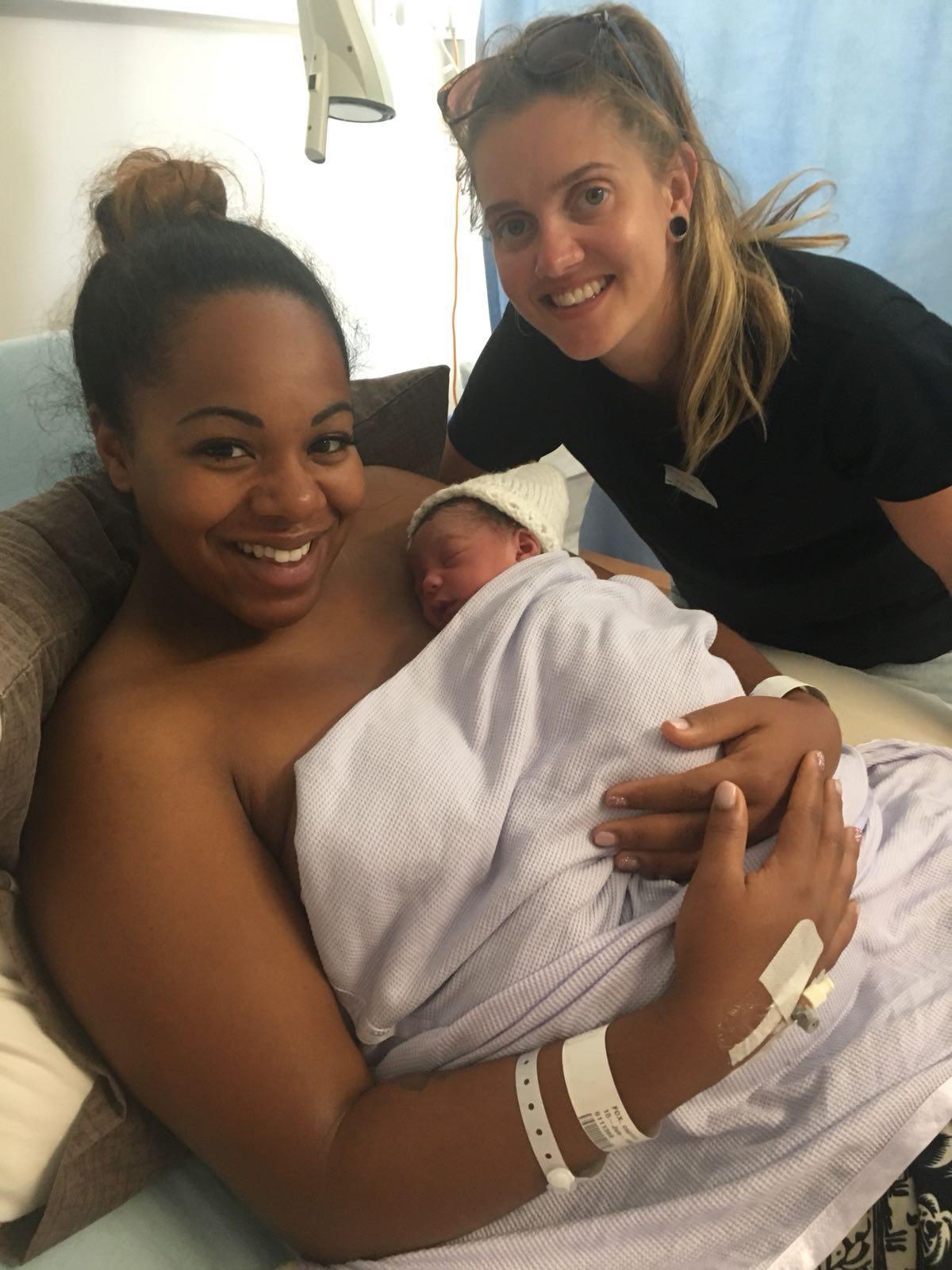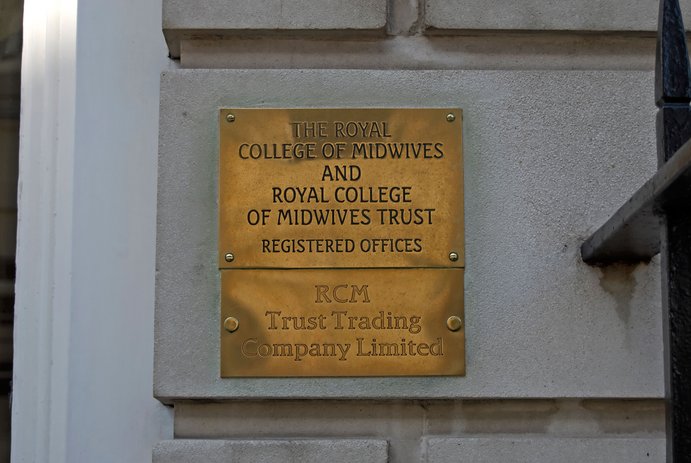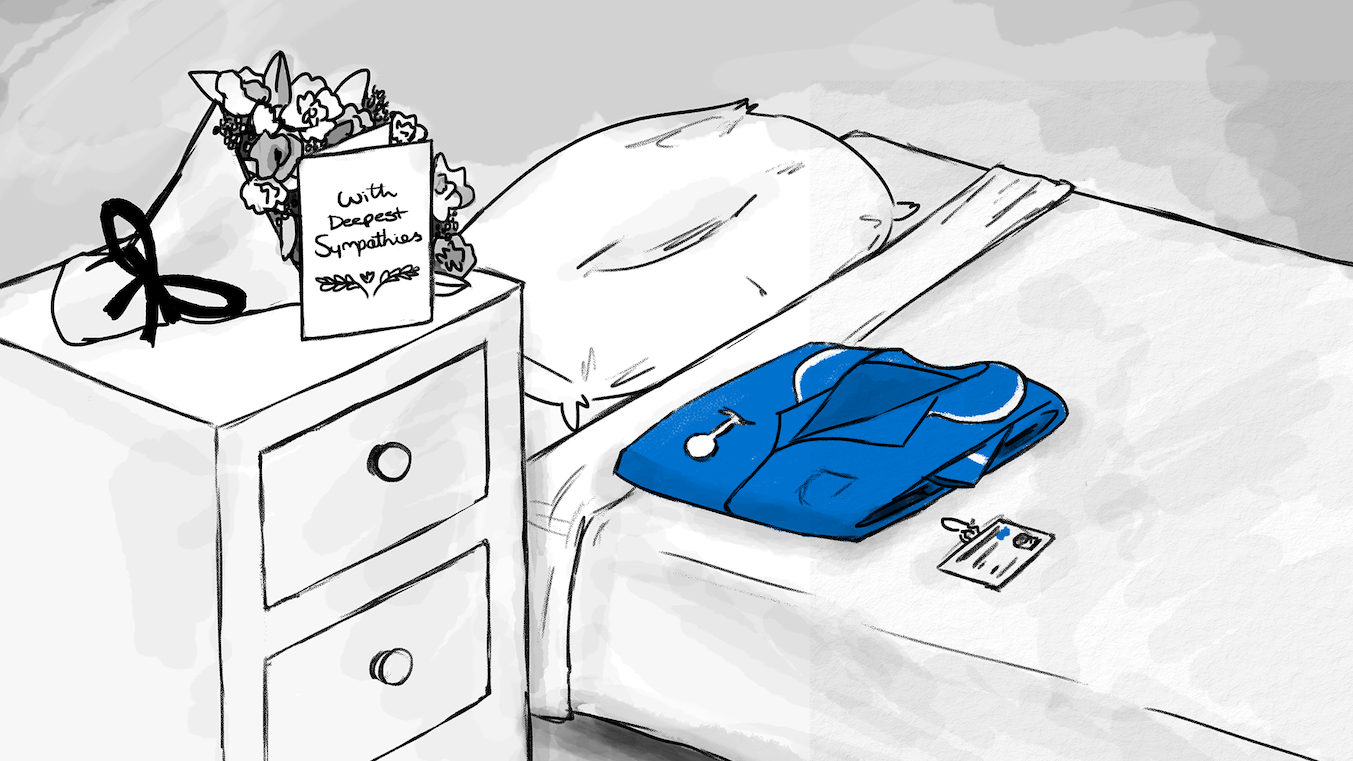Black women have lowest IVF success rates in the NHS. Why?
NHS funding cuts are exacerbating inequalities in IVF outcomes - with Black women starting fertility treatment later, experiencing lower rates of success, and even being excluded altogether due to inaccurate metrics.
For couples experiencing infertility, or for those in same-sex relationships, IVF is a well-trodden route into parenthood. NHS funding for the procedure is a postcode lottery decided by local authorities, and with reams of specific criteria to meet - with no guarantees of success - it is not an easy process for anyone. But for Black women and birthers, this already difficult system is even more fraught.
Speaking to The Lead, Black and mixed-race women who have attempted NHS IVF treatment over the last few years, paint a worrying picture. They report exclusion at every turn, with posters and medical literature overwhelmingly depicting white families, widespread negative stereotypes with Black women assumed to be single mothers, or labelled as ‘angry’ or ‘aggressive’ for speaking up for themselves, a generalised lack of support, and a trend of pain being underplayed or dismissed. And just like Black women on any maternity journey in the UK, they face a significantly higher risk of dying in the process - almost four times higher than white women, according to an Oxford University study.
These problems in the treatment process bleed into the results. A report from the Human Fertilisation and Embryology Authority [HFEA] released late last year, revealed significant differences by ethnic group in the use and outcomes of fertility treatment. While the average IVF birth rate per embryo transferred has increased across all groups, Black and Asian patients aged 18-37 had the lowest birth rates (23% and 24% respectively) compared to white patients (32%) in 2020-21.
"We are concerned that the data shows Black, Asian and ethnic-minority patients are left behind.”
The report also highlighted disparities in the age patients start treatment. Black patients in heterosexual relationships started fertility treatment about a year later than other ethnic groups, at 36 - a year younger than Carly was when she had her child. A year might not sound like much, but age is a critical factor in treatment success rates. The report suggests this may be due to barriers to access, slow referrals, or even social stigma.
“We know fertility declines with age, and we are concerned that the data shows Black, Asian and ethnic-minority patients are left behind,” says Dr Geeta Nargund, a member of HFEA and lead consultant for reproductive medicine at St George's Hospital NHS Trust.
“Age is a key factor in success rates. However, the one-year difference in age alone doesn’t explain the almost 10% gap in birth rates for Black patients compared to white patients. This may be due to pre-existing health factors such as fibroids, but we know from the Royal College of Obstetricians and Gynaecologists that waiting lists are longer, which subsequently has a knock-on effect in having successful treatment.”
NHS-funded IVF cycles among patients under 40 in heterosexual relationships were found to have decreased across all ethnic groups, but funding decreased the most among Black patients, from 60% in 2019 to 41% in 2021.
Professor Nargund says the decline in funding may be partly explained by difficulty in accessing treatment, or delays in accessing tests and surgeries prior to starting treatment due to the pandemic.
“The fall in NHS-funded IVF cycles among Black patients also likely relates to changes to funding criteria or access to treatment in London, where 49% of the Black population in England and Wales lived in 2021,” she adds.
According to Nargund, these differences might also be due to regional funding criteria set by the devolved governments in Scotland, Wales and Northern Ireland, and Integrated Care Boards in England. “The availability of funding for IVF can range from no funding to three funded cycles, depending on location and eligibility restrictions, such as body mass index [BMI].”
These latest findings are consistent with similar reports the HFEA has published over the last ten years. In 2014-2018, for Black patients aged 30-34, the birth rate per embryo transferred was on average 23% compared to white patients at 30%. A decade on, this stark disparity is almost exactly the same.
A multi-pronged issue
There are various intersecting problems that contribute to unequal outcomes for Black women in fertility treatment. As well as socioeconomic factors, with Black women more likely to be living in poverty and therefore less able to pay for multiple treatments, there are also a multitude of other health inequalities to navigate - Black women are more at risk of STIs, fibroids, endometriosis (for which they wait even longer for a diagnosis than white women), pelvic inflammatory disease, and are diagnosed with certain cancers later - all of which can impact the success of IVF.
“These different factors are coming at Black women from all directions,” says Helen George, a psychotherapist currently completing a PhD on Black women’s experiences of infertility. “This is not a single issue, and no one cause can be viewed in a vacuum. There are always multiple issues working against Black women.”
For Helen, one of the key things that contributes to the unequal outcomes of fertility treatments for Black women is the continued use of BMI as a health metric - a practice that has long been recognised as both defunct and racist by many health experts.
"Black women tell me they don’t feel listened to. They don’t feel seen. There is stigma and shame, and their cultural identities are frequently not taken into account by health professionals.”
“BMI is being used to rule people out of fertility treatment, and yet it is an index that was developed through a Eurocentric lens,” Helen explains. “Black women are being told that they are obese and too unhealthy for IVF using a measurement that doesn’t even work for their bodies.”
While NICE guidelines do not explicitly rule out providing IVF for women with obesity, it does suggest patients should “ideally be in the range 19–30 kg/m2 before commencing assisted reproduction” and some of the groups that control funding of IVF at a local level have used this to impose their own restrictions.
Navigating all of these additional and sometimes arbitrary barriers takes a toll. Fertility treatment is mentally exhausting for anyone, but for Black women, wading through a system that is specifically hostile towards them, their need for psychological support is immense. And currently, the help that is on offer is not up to scratch.
“In terms of the actual IVF, the procedure is traumatic. It can be really painful,” says Helen. “Then you have the two-week wait to see if it worked, which is just the most awful thing women have to go through - they're just moving in and out of hope and despair.
“This is on top of the trauma of their infertility, the fact that they cannot conceive, or if treatment keeps failing time and time again, and getting themselves into debt, in some cases losing everything. The Black women I work with tell me they don’t feel listened to. They don’t feel seen. There is stigma and shame, and their cultural identities are frequently not taken into account by health professionals.”
Being Black and queer
Caprice Fox is a Black, queer woman in a same-sex relationship. She and her wife ended up going private in order to conceive because of the endless hoops they felt they were being made to jump through for the NHS.
“The system is not set up for queer families,” Caprice tells The Lead. “We were being given questionnaires designed for hetero couples. They asked us how long we had been trying for a baby. Well try as we might, we knew that wasn’t a possibility for us.”
Caprice, who lives in Bristol, says she and her wife were asked to prove they had been trying for two years - which wasn’t possible - and they had to have evidence of six failed private attempts at IVF, which they couldn’t afford. In fact, the fertility treatment referral criteria for Bristol, North Somerset and South Gloucestershire Clinical Commissioning Group [BNSSG] says same-sex couples must have had insemination on at least 10 cycles at an HFEA licenced centre, over a period of two years, “that has failed to lead to a pregnancy.” They add that same-sex couples should also have discussed “the possibility of the other partner trying to conceive before proceeding to interventions involving the sub-fertile partner”.
Due to these convoluted criteria, Caprice felt they had no option but to go private, a choice that isn’t even on the cards for many couples.
“The NHS felt incredibly rigid,” she adds. “Our needs were simply not being met. It felt like such a prejudiced system and we were trying so hard to be part of it, it just didn’t make sense. It certainly didn’t feel like a safe space for us, especially when we started looking up stats around Black maternal mortality.”
Data consistently shows alarmingly higher rates of maternal and baby deaths among Black and Asian women, compared to their white counterparts. In the UK, Black British mothers are up to four times more likely than white mothers to die during pregnancy or within the first six weeks after childbirth. The risk of dying from pregnancy-related causes is three times higher for mothers of mixed ethnicity and twice as high for women of Asian ethnicity.
A spokesperson for NHS Bristol, North Somerset and South Gloucestershire ICB said: “Our infertility treatment and preservation policy is designed to enable access to support for as many people experiencing infertility problems as possible within available resources.
“The policy was developed following extensive engagement with local clinicians and stakeholders, with input from regional and national organisations and is consistent with guidance from National Institute for Health and Care Excellence.”

"To see yourself represented makes you feel like you’re part of something - rather than isolated and alone.”
Data consistently shows alarmingly higher rates of maternal and baby deaths among Black and Asian women, compared to their white counterparts. In the UK, Black British mothers are up to four times more likely than white mothers to die during pregnancy or within the first six weeks after childbirth. The risk of dying from pregnancy-related causes is three times higher for mothers of mixed ethnicity and twice as high for women of Asian ethnicity.
In those initial NHS appointments, Caprice says she experienced a litany of racial microaggressions. But these small incidents began to pile up until she felt both unwelcome and unsafe.
“If I went to appointments without my wife they would make comments like - ‘is the dad not around?’ - why are they so quickly assuming that I, as a Black woman, am a single mum? I was also being put forward for certain medications and testing that are designed for people with certain Black heritages - but not my heritage. They lump us all in the same category without digging any deeper.”
She also says the literature, pamphlets and posters in clinical spaces were almost always homogeneous. The families depicted were overwhelmingly white and heterosexual. “Representation is so important,” she says. “Especially in such a vulnerable moment in your life. To see yourself represented makes you feel like you’re part of something - rather than isolated and alone.”
Caprice felt unable to vocalise her feelings authentically, silenced by the pervasive stereotypes frequently pushed on Black women by those in positions of power: “You have to stay calm in the face of it all,” she says. “It only takes me raising my voice once to be labelled ‘aggressive’.”
Hazel Savage is also in a relationship with a woman and felt similarly let down by the inaccessibility of treatment options on the NHS. But, in a financially stable position, Hazel and her wife Jade were able to choose to go private to help make their dream of a family a reality.
At 42, Hazel is ten years older than Jade, so they have chosen the option of shared motherhood, where Jade donates her eggs while Hazel carries the baby and gives birth. Like Caprice, Hazel says she has experienced a range of microaggressions during treatment - from a lack of representation, to questionnaires that actively exclude gay couples - but she found that one of the trickiest things to navigate was finding a suitable sperm donor as an interracial couple.
The HFEA found that over half of sperm used in treatment from donors of ‘Mixed, Other and Black’ backgrounds in 2017-21 was imported from abroad, which fits with Hazel’s experience as she says there was a distinct lack of viable options.
“When we were looking for someone who had a similar skintone to me, there were only two options in the entire database,” she says. “We were lucky that we got the last two ‘straws’ of that donor sperm, but it's really challenging for people to have to go through that. Whereas if you're searching for white donors, there are a lot more varieties.”
At the time of speaking to Hazel, in late December 2023, she was still reeling from the recent loss of a pregnancy and her devastation was palpable.
“We found out two weeks ago that I was no longer pregnant,’ she recalls. “My greatest pain was seeing Jade upset. I feel like I’ve let people down. Jade goes crazy when I say that, but it’s how I feel. All our dreams were coming true - and then it’s all just gone.
“We knew straight away that we wanted to try again. We have said to each other that we both have to be ready to go through this same feeling, the pain of this loss, potentially multiple times. And, right now, we both feel ready for that.”
From conception to birth
Hazel’s story shows how a fertility journey doesn’t end with a successful conception. There are then the hurdles of pregnancy and birth to clear, which for Black, mixed and ethnic minority women, can be littered with additional complications.
Carly Wilkinson was 37 when she conceived her first child via IVF. Carly, a mixed-race woman with Black heritage, knew this would be her family’s only shot at having a biological child because her partner is paraplegic and they’re unable to conceive in the ‘traditional’ way.
The end result of Carly’s fertility treatment was positive - she fell pregnant on the first attempt and gave birth to a healthy child. And yet, much of her experience of navigating the NHS fertility pathways was marred by poor communication, inaccuracies and even neglect. At times, she felt ignored and unsupported. When she fell pregnant, Carly was sent a letter of congratulations detailing the next steps - only, it was addressed to the wrong couple.
"It’s a trap because if you react then you’re seen as the ‘angry Black woman’, but the alternative is to not advocate for yourself. It’s really scary.”
“I don't know if I'm just desensitised to things being harder for Black and mixed-race women, or if what I went through was a symptom of the NHS really being on its knees. You just kind of make excuses for it,” says Carly, who also lives in Bristol.
When Carly’s waters broke she went to the hospital, only to be sent home and told she was just urinating. But she knew the difference.
“I wasn’t weeing. My waters had broken, but it was coming out slowly,” she says. “Once your waters break you have 24 hours before your baby is at risk of serious infection, sepsis, basically death. And I was sent home. I didn’t go back to the hospital for four days.
“I was so scared and vulnerable at that moment that I eventually just shut up and did what I was told. I trusted the doctors, because you have to.”
When Carly returned after finally having her first contractions, she was scolded for waiting it out, even though she had done what she was told to do. Even at that point, she feels she wasn’t taken seriously.
“They didn’t have a bed for me, so they told me to walk around the car park. This was moments after telling me I needed an induction and it was an emergency situation.”
After four hours of doing laps around the car park with the pain from her contractions steadily increasing, Carly came inside to beg for a bed.
“In the end, I was on all fours on the floor. For the first time in my life I knew I had to tell people to stop minimising what I was going through and ask for what I needed. I said ‘I need a bed now’, and one member of staff told me I couldn’t be in that much pain because she had seen me eating a sandwich earlier.
“It’s a trap because if you react then you’re seen as the ‘angry Black woman’, but the alternative is to not advocate for yourself. It’s really scary.”
Carly’s fears are more than founded. The tragic and frightening maternal mortality rates for Black women in the UK are proof of that. From conception, to birth, to postnatal aftercare, Black women are being failed in a multitude of ways, with systemic racism at the heart of every failing.
For Dr Nargund, the most urgent improvement needed in terms of fertility outcomes is early access and early referral for treatment for Black and ethnic minority women.
“There should be improved access to information for healthcare professionals, to increase their awareness of the importance of early referral and investigations when patients from an ethnic minority group present with high risk factors, or pre-existing conditions that may reduce chances of fertility,” she adds. “Our organisations will continue to raise public awareness about factors that may affect fertility so people can make informed choices and seek medical help if needed.”
The Lead is now on Substack.
Become a Member, and get our most groundbreaking content first. Become a Founder, and join the newsroom’s internal conversation - meet the writers, the editors and more.





